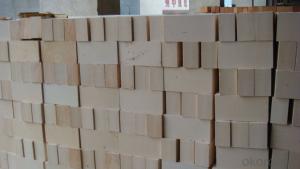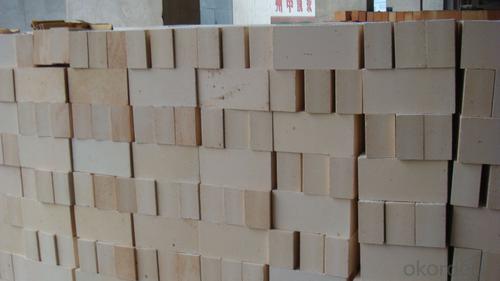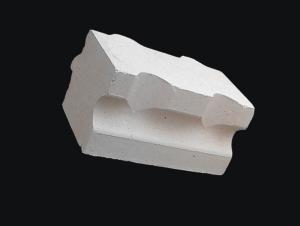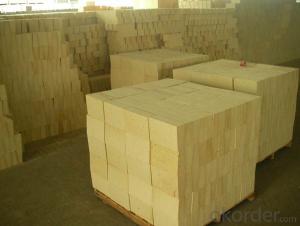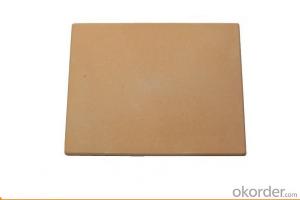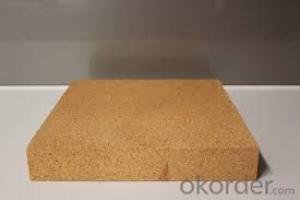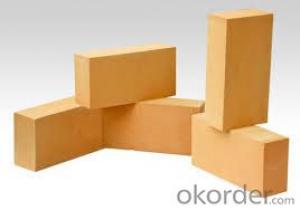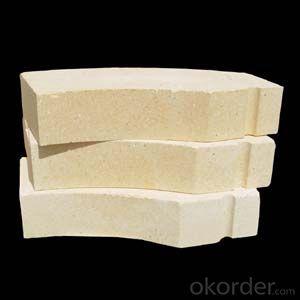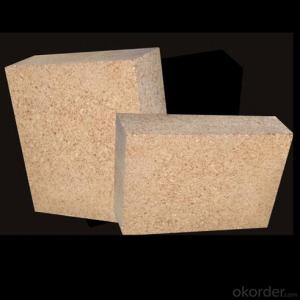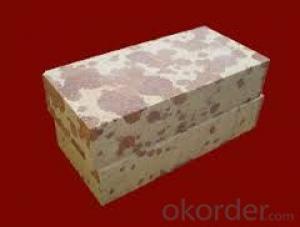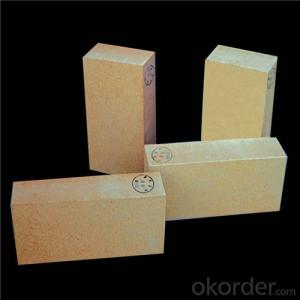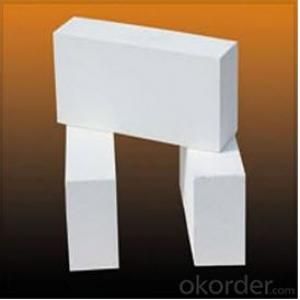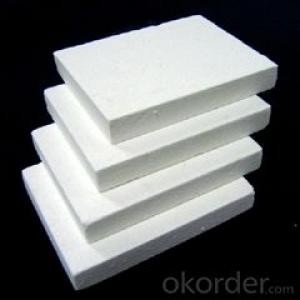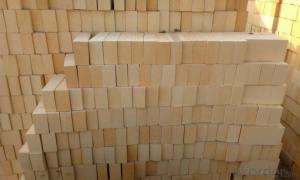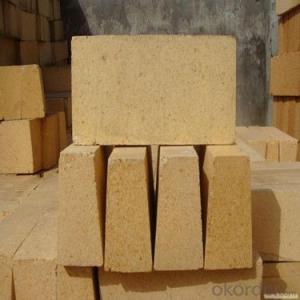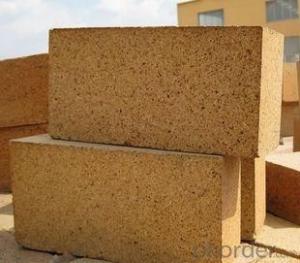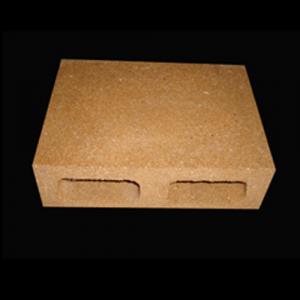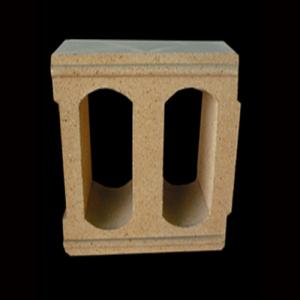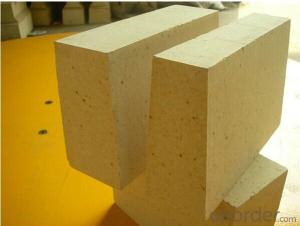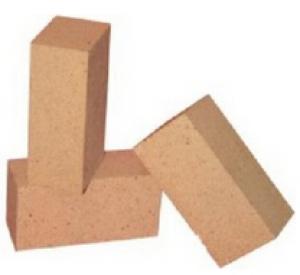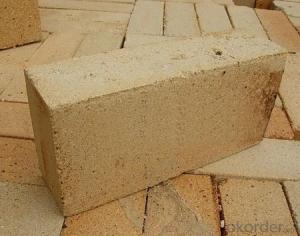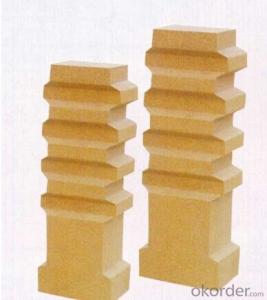High Alumina Refractory Brick for Fireplace Low Porosity Lightweight Fire Bricks
- Loading Port:
- Shanghai
- Payment Terms:
- TT OR LC
- Min Order Qty:
- 1 m.t.
- Supply Capability:
- 111 m.t./month
OKorder Service Pledge
OKorder Financial Service
You Might Also Like
Specifications
1.Good high temperature resistance
2.High bulk density
3.Low creep
Product Description
Low Porosity Clay Brick
This product is mainly used in glass heating chamber with features of low porosity, strong corrosion resistance, etc. To meet different environmental need of glass kiln, it is made in three serials according to corresponding process formulas: DN-a, DN-b, DN-c.
Low Porosity Brick | |||
DN-a | DN-b | DN-c | |
Al2O3 (%) | 45 | 42 | 40 |
Fe2O3(%) | 1.2 | 1.5 | 2.0 |
Refractoriness (℃) | 1770 | 1750 | 1730 |
Refractoriness Under Load (KD℃) | 1470 | 1450 | 1400 |
Apparent Porosity (%) | 13 | 15 | 17 |
Bulk Density (g/cm3) | 2.35 | 2.30 | 2.25 |
Atmospheric Pressure Strength (MPa) | 75 | 60 | 50 |
- Q: What are the reasons for the spalling of refractory bricks in the production of lime kiln?
- In the course of the production of lime kiln, the local block of refractory brick is a very dangerous signal. It is suggested that you stop the kiln to prevent the collapse of a large area. Lime kiln is the main equipment for the production of limestone kiln and rotary kiln is two, with the growth of calcium carbide lime kiln industry, iron and steel industry, the construction industry to the amount of limestone has become the main production equipment, and refractory bricks became the heart of lime kiln.
- Q: In 2016, a few of the traditional refractory materials will be able to survive
- From the year 2015 to the year 16 the end of the year, refractories industry presents two kinds of situations: one is a small business, a single product variety and equipment, to meet the demands of both environmental protection and the downstream market, such enterprises are generally in the Qing state inventory;
- Q: What are the requirements for Rubble backfill height?
- 1, filling thickness is not greater than 50cm.2, filling, the use of layered filling.
- Q: What is the standard size of high alumina brick?
- The country has laid down a number of criteria for the use of refractory bricks to unify market demand.
- Q: What are the specific raw materials for plastic pallets?
- There are two kinds of raw materials for plastic pallets: one is polypropylene (PP) and the other is polyethylene (HDPE).Plastic pallets for logistics storage: pp+pe material, recycled material 10%;Plastic trays for food trays: food grade PP, PE, pc;Polyethylene (HDPE) has excellent impact resistance and cold resistance, and it can resist environmental stress cracking. Excellent chemical stability, good oil resistance. Water absorption and tiny, low permeability, organic vapor transmission rate is larger. Electrical insulation is good, in all frequency range, dielectric properties are extremely excellent.
- Q: What is the price of the first grade high alumina brick?
- Many factories in Xinmi have high alumina bricks, but they must choose a regular factory. Kuwait refractory level high aluminum brick price at around 1600, the quality of double stable supply
- Q: What are the high temperature refractory mortars made of?
- Products used in metallurgy, building materials, machinery, chemical, power industry, industrial thermal furnace, for masonryBuilding clay brick, high alumina brick and corundum brick have the characteristics of full grey seam, good airtightness, high bonding strength, high temperature performance and suitable construction time
- Q: The difference between light high alumina brick and heavy aluminum brick
- Lightweight high alumina bricks, commonly called insulating refractory bricks, also known as insulating refractory bricks. First of all, literally, lightweight aluminum bricks and heavy aluminum bricks are very different in weight. Lightweight high alumina bricks, also called insulated high alumina bricks, are designed for insulation and heat preservation. In normal use, the utility model is not directly contacted with the furnace temperature, and is a refractory brick product which is close to the furnace wall and has the function of heat insulation and heat preservation.
- Q: How high can aluminum bricks expand at 80O degrees of heat?
- When an object is heated, the particle moves faster and thus occupies additional space. This phenomenon is called dilation.
- Q: Is glass wool inorganic thermal insulation material?
- The use of glass wool, glass wool is usually used as raw materials of various types of insulation materials, such as glass wool board, glass wool, glass wool, glass wool pipe, can be used in the following areas:1) roof insulation, cold protection, sound-absorbing materials; 2) building exterior wall insulation and cold protection; 3) entertainment places, theaters, television stations, radio stations, laboratories, sound absorption treatment.
Send your message to us
High Alumina Refractory Brick for Fireplace Low Porosity Lightweight Fire Bricks
- Loading Port:
- Shanghai
- Payment Terms:
- TT OR LC
- Min Order Qty:
- 1 m.t.
- Supply Capability:
- 111 m.t./month
OKorder Service Pledge
OKorder Financial Service
Similar products
Hot products
Hot Searches
Related keywords
